 In a recent blog, Falling sterling – bad for some; good for others, we looked at the depreciation of sterling following the Brexit vote. We saw how it will have beneficial effects for some, such as exporters, and adverse effects for others, such as consumers having to pay a higher price for imports and foreign holidays. The article linked below examines these effects in more depth.
In a recent blog, Falling sterling – bad for some; good for others, we looked at the depreciation of sterling following the Brexit vote. We saw how it will have beneficial effects for some, such as exporters, and adverse effects for others, such as consumers having to pay a higher price for imports and foreign holidays. The article linked below examines these effects in more depth.
Just how much the quantity of exports will increase depends on two main things. The first is the amount by which the foreign currency price falls. This depends on what exporters choose to do. Say the pound falls from €1.30 to €1.18. Do exporters who had previously sold a product selling in the UK for £100 and in the eurozone for €130, now reduce the euro price to €118? Or do they put it down by less – say, to €125, thereby earning £105.93 (£(125/1.18)). Their sales would increase by less, but their profit margin would rise.
The second is the foreign currency price elasticity of demand for exports in the foreign markets. The more elastic it is, the more exports will rise for any given euro price reduction.
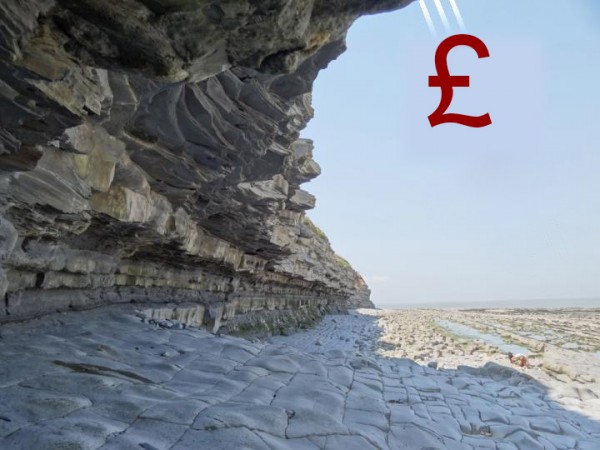 It is similar with imports. How much the sales of these fall depends again on two main things. The first is the amount by which the importing companies are prepared to raise sterling prices. Again assume that the pound falls from €1.30 to €1.18 – in other words, the euro rises from 76.92p (£1/1.3) to 84.75p (£1/1.18). What happens to the price of an import to the UK from the eurozone whose euro price is €100? Does the importer raise the price from £76.92 to £84.75, or by less than that, being prepared to accept a smaller profit margin?
It is similar with imports. How much the sales of these fall depends again on two main things. The first is the amount by which the importing companies are prepared to raise sterling prices. Again assume that the pound falls from €1.30 to €1.18 – in other words, the euro rises from 76.92p (£1/1.3) to 84.75p (£1/1.18). What happens to the price of an import to the UK from the eurozone whose euro price is €100? Does the importer raise the price from £76.92 to £84.75, or by less than that, being prepared to accept a smaller profit margin?
The second is the sterling price elasticity of demand for imports in the UK. The more elastic it is, the more imports will fall and, probably, the more the importer will be prepared to limit the sterling price increase.
The article also looks at the effect on aggregate demand. As we saw in the previous blog, a depreciation boosts aggregate demand by increasing exports and curbing imports. The effects of this rise in aggregate demand depends on the degree of slack in the economy and the extent, therefore, that (a) exporters and those producing import substitutes can respond in terms of high production and employment and (b) other sectors can produce more as multiplier effects play out.
Finally, the article looks at the effect of the depreciation of sterling on asset prices. UK assets will be worth less in foreign currency terms; foreign assets will be worth more in sterling. Just how much the prices of internationally traded assets, such as shares and some property, will change depends, again, on their price elasticities of demand. In terms of assets, there has been a gain to UK balance sheets from the depreciation. As Roger Bootle says:
Whereas the overwhelming majority of the UK’s liabilities to foreigners are denominated in sterling, the overwhelming bulk of our assets abroad are denominated in foreign currency. So the lower pound has raised the sterling value of our overseas assets while leaving the sterling value of our liabilities more or less unchanged.
Article
How a lower pound will help us to escape cloud cuckoo land, The Telegraph, Roger Bootle (31/7/16)
Questions
- What determines the amount that exporters from the UK adjust the foreign currency price of their exports following a depreciation of sterling?
- What determines the amount by which importers to the UK adjust the sterling price of their products following a depreciation of sterling?
- What determines the amount by which sterling will depreciate over the coming months?
- Distinguish between stabilising and destabilising speculation? How does this apply to exchange rates and what determines the likelihood of there being destabilising speculation against sterling exchange rates?
- How is UK inflation likely to be affected by a depreciation of sterling?
- Why does Roger Bootle believe that the UK has been living in ‘cloud cuckoo land’ with respect to exchange rates?
- Why has the UK managed to sustain a large current account deficit over so many years?
 In this post we focus on three aspects of poverty around the world. The first is the definition of poverty. Is it an absolute or a relative concept? Does its definition change as the world develops. The second is the extent of poverty. Is the problem getting worse as inequality deepens, or are the numbers (absolutely or proportionately) getting smaller despite increased inequality? The third is policy to tackle the problem. What can be done and is being done? What answers are being given by policymakers in different parts of the world?
In this post we focus on three aspects of poverty around the world. The first is the definition of poverty. Is it an absolute or a relative concept? Does its definition change as the world develops. The second is the extent of poverty. Is the problem getting worse as inequality deepens, or are the numbers (absolutely or proportionately) getting smaller despite increased inequality? The third is policy to tackle the problem. What can be done and is being done? What answers are being given by policymakers in different parts of the world?
As far as the measurement of poverty is concerned, the simplest distinction is between absolute and relative poverty. Absolute poverty could be measured as income below a certain real level deemed necessary to achieve a particular standard of living. This could be specified in terms of sufficient income to have adequate food, shelter, clothing and leisure time, and adequate access to healthcare, clean water, sanitation, education, etc. An obvious problem here is what is considered ‘adequate’, as this is partly culturally determined and will also depend on physical and geographical features, such as climate.
The World Bank defines extreme absolute poverty as living on under $1.90 per day in purchasing-power parity terms. However, even after adjusting for purchasing power, what is considered the poverty threshold differs enormously from country to country. As the Wikipedia entry states:
Each nation has its own threshold for absolute poverty line; in the United States, for example, the absolute poverty line was US$15.15 per day in 2010 (US$22,000 per year for a family of four), while in India it was US$1.0 per day and in China the absolute poverty line was US$0.55 per day, each on PPP basis in 2010.
Relative poverty is normally taken to mean when a person’s income falls below a certain percentage of the mean or median. Thus in richer countries, for a given percentage, the poverty threshold would be at a higher absolute income.  In the EU, people in relative poverty are defined as those with disposable income (after monetary benefits) less than 60% of the median.
In the EU, people in relative poverty are defined as those with disposable income (after monetary benefits) less than 60% of the median.
Both approaches focus on consumption. Other approaches include social and cultural exclusion as dimensions of poverty.
What is clear is that poverty has a number of definitions. One problem with this is that politicians can focus on whatever definition suits them. Thus in the UK, with relatively high levels of employment, but often at low wages and only part-time employment, the Conservative government has redefined poverty as where no-one in a family is in work. Yet many working families have very low levels of income, considerably below 60% of the median.
The second aspect of poverty is its extent and whether it is growing. According to the United Nations, globally ‘extreme poverty rates have been cut by more than half since 1990. While this is a remarkable achievement, one in five people in developing regions still live on less than $1.25 a day, and there are millions more who make little more than this daily amount, plus many people risk slipping back into poverty.’
 Despite this progress, in many countries extreme poverty is increasing. And in others, although the number in extreme poverty may be declining, it is still high and inequality is increasing so that more people are living only just above the extreme poverty line. The articles look at dimensions of poverty in different countries.
Despite this progress, in many countries extreme poverty is increasing. And in others, although the number in extreme poverty may be declining, it is still high and inequality is increasing so that more people are living only just above the extreme poverty line. The articles look at dimensions of poverty in different countries.
For example, the first The Conversation article argues that the financial crisis of 2008–09 led to a substantial increase in poverty across the European continent.
The impoverishment of Greece, Italy, Cyprus, Spain and Portugal has been so severe that these southern European countries, taken together, had higher levels of poverty and deprivation than many of the former Communist nations that joined the European Union in 2004.
The third aspect is how to tackle the problem of poverty. There are three broad policy approaches.
The first is the use of cash transfers, such as unemployment benefits. The second is providing free or subsidised goods and services, such as healthcare or education. The ability of a country to support the poor in either of these ways depends on its tax base. Also, clearly, it depends on its priorities. There is also the issue of incentives. Do benefits encourage or discourage the recipients from seeking work? This depends on the design of the system. For example, if childcare is subsidised, this may both aid poor parents and also encourage parents responsible for looking after young children to seek work.
 The third is to attempt to improve the earning power of the poor. This may in part be by the second approach of improving education, training and health. But it may also involve removing restrictions to employment, say by making various forms of discrimination illegal. It may also involve increasing land rights. In many developing countries land is very unequally distributed; redistribution to the poor can make a substantial contribution to relieving poverty. Another approach is to encourage agencies which supply microfinance for poor people wishing to set up their own small business.
The third is to attempt to improve the earning power of the poor. This may in part be by the second approach of improving education, training and health. But it may also involve removing restrictions to employment, say by making various forms of discrimination illegal. It may also involve increasing land rights. In many developing countries land is very unequally distributed; redistribution to the poor can make a substantial contribution to relieving poverty. Another approach is to encourage agencies which supply microfinance for poor people wishing to set up their own small business.
The articles below look at a number of dimensions of poverty: its measurement, its extent and its alleviation. They look at the problem from the perspective of different countries. It is interesting to see to what extent the problems and solutions they identify are country-specific or general.
Articles
Extreme poverty affects 1 in 8 globally Buenos Aires Herald (20/7/16)
How poverty has radically shifted across Europe in the last decade The Conversation, Rod Hick (20/7/16)
The economics of poverty The Tribune of India, S Subramanian (22/7/16)
Poverty Chains and Global Capitalism. Towards a Global Process of Impoverishment Global Research (Canada), Benjamin Selwyn (20/7/16)
Asia’s cost of prosperity The Nation, Karl Wilson (24/7/16)
Private rental sector is the ‘new home of poverty’ in the UK The Guardian, Brian Robson (20/7/16)
Challenges in maintaining progress against global poverty Vox, Martin Ravallion (23/12/15)
California, sixth largest economy in the world, has highest poverty rate in US wsws.org, Marc Wells (22/7/16)
How gross inequality and crushed hopes have fed the rise of Donald Trump The Conversation, Nick Fischer (21/7/16)
Information
Sustainable Development Goals – Goal 1: End poverty in all its forms everywhere United Nations
Children of the Recession: Innocenti Report Card 12 UNICEF, Gonzalo Fanjul (September 2014)
Listings on Poverty Joseph Rowntree Foundation
Poverty The World Bank
Hunger and World Poverty Poverty.com
Questions
- Distinguish between absolute and relative poverty. Give examples of specific measures of each and the extent to which they capture the complex nature of the problem.
- Discuss the appropriateness of the seven measures of poverty used in the first The Conversation article.
- How did the financial crisis affect the proportion of people living in poverty? Explain.
- What is the relationship between poverty and inequality? Does a more unequal society imply that there will be a greater proportion of people living in poverty?
- How has international poverty changed in recent years? What explanations can you give?
- What are the advantages and disadvantages of using income per head as a measure of poverty, whether absolute or relative?
- Why is poverty so high in (a) the USA as a whole; (b) California specifically?
- How does globalisation affect poverty?
- Are adverse environmental consequences an inevitable result of reducing poverty in developing countries?
- Is freer trade likely to increase or decrease poverty? Explain
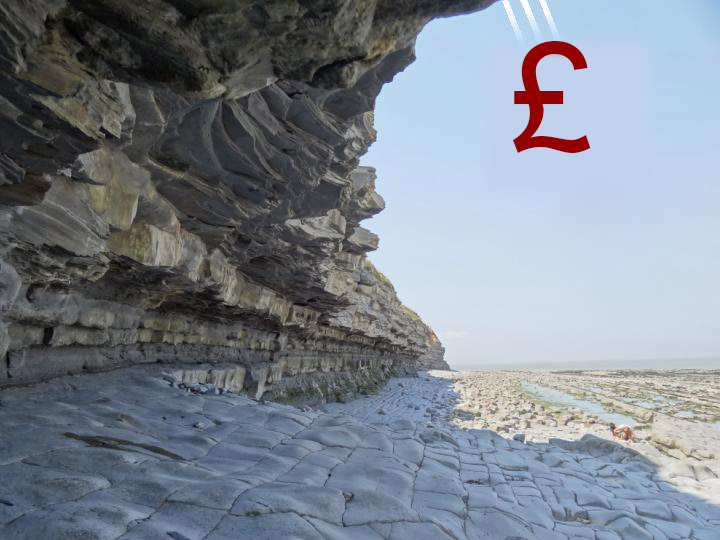 Since the Brexit vote in the referendum, sterling has been falling. It is now at a 31-year low against the US dollar. From 23 June to 6 July it depreciated by 12.9% against the US dollar, 10.7% against the euro and 17.0% against the yen. The trade-weighted sterling exchange rate index depreciated by 11.6%.
Since the Brexit vote in the referendum, sterling has been falling. It is now at a 31-year low against the US dollar. From 23 June to 6 July it depreciated by 12.9% against the US dollar, 10.7% against the euro and 17.0% against the yen. The trade-weighted sterling exchange rate index depreciated by 11.6%.
Why has this happened? Partly it reflects a decline in confidence in the UK economy by investors; partly it is in response to policy measures, actual and anticipated, by the Bank of England.
As far as investors are concerned, the anticipation is that there will be net direct investment outflows from the UK. This is because some companies in the UK are considering relocating part or all of their business from the UK to elsewhere in Europe. For example, EasyJet is drawing up plans to move its headquarters to continental Europe. It is also because investors believe that foreign direct investment in the UK is likely to fall as companies prefer to invest elsewhere, such as Ireland or Germany.
 Thus although the effect of net direct investment outflows (or reductions in net inflows) will be on the long-term investment part of the financial account of the balance of payments, the immediate effect is felt on the short-term financial flows part of the account as investors anticipate such moves and the consequent fall in sterling.
Thus although the effect of net direct investment outflows (or reductions in net inflows) will be on the long-term investment part of the financial account of the balance of payments, the immediate effect is felt on the short-term financial flows part of the account as investors anticipate such moves and the consequent fall in sterling.
As far as monetary policy is concerned, the fall in sterling is in response to four things announced or signalled by Mark Carney at recent news conferences (see Monetary and fiscal policies – a U-turn or keeping the economy on track?).
First is the anticipated fall in Bank Rate at the next meeting of the Monetary Policy Committee on 13/14 July. Second is the possibility of further quantitative easing (QE). Third is an additional £250bn of liquidity that the Bank is prepared to provide through its normal open-market operations. Fourth is the easing of capital requirements on banks (reducing the countercyclical buffer from 0.5% to 0%), which would allow additional lending by banks of up to £150bn.
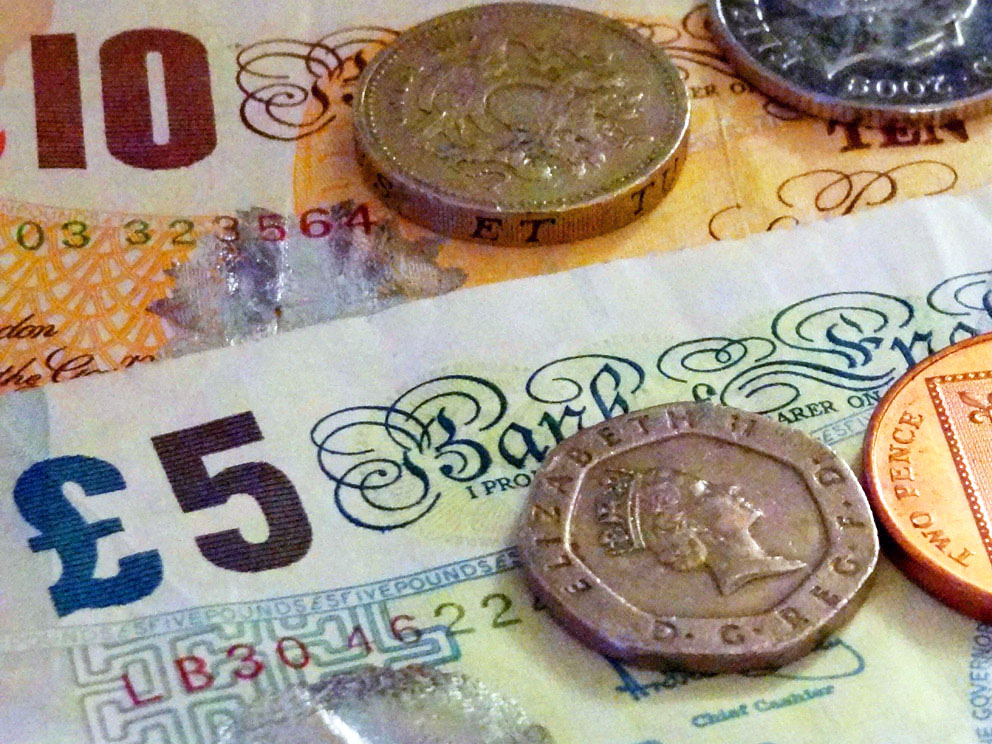 Lower interest rates, additional liquidity and further QE would all increase the supply of sterling on the foreign exchange markets. The anticipation of this, plus the anticipation of lower interest rates, would decrease the demand for sterling. The effect of these supply and demand changes is a fall in the exchange rate.
Lower interest rates, additional liquidity and further QE would all increase the supply of sterling on the foreign exchange markets. The anticipation of this, plus the anticipation of lower interest rates, would decrease the demand for sterling. The effect of these supply and demand changes is a fall in the exchange rate.
But is a fall in the exchange rate a ‘good thing’? As far as consumers are concerned, the answer is no. Imports will be more expensive, as will foreign holidays. People’s pounds will buy less of things priced in foreign currency and thus people will be poorer.
As far as exporters are concerned, however, the foreign currency they earn will exchange into more pounds than before. Their sterling revenues, therefore, are likely to increase. They might also choose to reduce the foreign currency price of exports, thereby increasing the quantity sold – the amount depending on the price elasticity of demand. The increase in exports and reduction in imports will help to reduce the current account deficit and also boost aggregate demand.
Articles
Pound slumps to 31-year low following Brexit vote The Guardian, Katie Allen , Jill Treanor and Simon Goodley (24/6/16)
Sterling’s post-Brexit fall is biggest loss in a hard currency Reuters, Jamie McGeever (7/7/16)
Brexit Accelerates the British Pound’s 100 Years of Debasement Bloomberg, Simon Kennedy and Lukanyo Mnyanda (5/7/16)
Pound sterling falls below $1.31 hitting new 31-year low Independent, Hazel Sheffield (5/7/16)
Viewpoints: How low will sterling go? BBC News, Leisha Chi (6/7/16)
How low will the pound fall? Financial Times (7/7/16)
Allianz’s El-Erian says UK must urgently get its act together or dollar parity could beckon Reuters, Guy Faulconbridge (7/7/16)
What does a falling pound mean for the British economy? The Telegraph, Peter Spence (6/7/16)
Data
Spot exchange rates: Statistical Interactive Database – interest & exchange rates data Bank of England
Questions
- What determines how much the exchange rate depreciates for a given shift in the demand for sterling or the supply of sterling?
- Why might the short-term effects on exchange rates of the Brexit vote be different from the long-term effects?
- Why has the pound depreciated by different amounts against different currencies?
- What are likely to be the effects on the financial and current accounts of the balance of payments of the Bank of England’s measures?
- Find out what has happened to business confidence since the Brexit vote. What effect does the level of confidence have on the exchange rate and why?
 The UK has voted to leave the EU by 17 410 742 votes (51.9% or 37.4% of the electorate) to 16 141 241 votes (48.1% or 34.7% of the electorate). But what will be the economic consequences of the vote?
The UK has voted to leave the EU by 17 410 742 votes (51.9% or 37.4% of the electorate) to 16 141 241 votes (48.1% or 34.7% of the electorate). But what will be the economic consequences of the vote?
To leave the EU, Article 50 must be invoked, which starts the process of negotiating the new relationship with the EU. This, according to David Cameron, will happen when a new Conservative Prime Minister is chosen. Once Article 50 has been invoked, negotiations must be completed within two years and then the remaining 27 countries will decide on the new terms on which the UK can trade with the EU. As explained in the blog, The UK’s EU referendum: the economic arguments, there are various forms the new arrangements could take. These include:
‘The Norwegian model’, where Britain leaves the EU, but joins the European Economic Area, giving access to the single market, but removing regulation in some key areas, such as fisheries and home affairs. Another possibility is ‘the Swiss model’, where the UK would negotiate trade deals on an individual basis. Another would be ‘the Turkish model’ where the UK forms a customs union with the EU. At the extreme, the UK could make a complete break from the EU and simply use its membership of the WTO to make trade agreements.
The long-term economic effects would thus depend on which model is adopted. In the Norwegian model, the UK would remain in the single market, which would involve free trade with the EU, the free movement of labour between the UK and member states and contributions to the EU budget.  The UK would no longer have a vote in the EU on its future direction. Such an outcome is unlikely, however, given that a central argument of the Leave camp has been for the UK to be able to control migration and not to have to pay contributions to the EU budget.
The UK would no longer have a vote in the EU on its future direction. Such an outcome is unlikely, however, given that a central argument of the Leave camp has been for the UK to be able to control migration and not to have to pay contributions to the EU budget.
It is quite likely, then, that the UK would trade with the EU on the basis of individual trade deals. This could involve tariffs on exports to the EU and would involve being subject to EU regulations. Such negotiations could be protracted and potentially extend beyond the two-year deadline under Article 50. But for this to happen, there would have to be agreement by the remaining 27 EU countries. At the end of the two-year process, when the UK exits the EU, any unresolved negotiations would default to the terms for other countries outside the EU. EU treaties would cease to apply to the UK.
It is quite likely, then, that the UK would face trade restrictions on its exports to the EU, which would adversely affect firms for whom the EU is a significant market.  Where practical, some firms may thus choose to relocate from the UK to the EU or move business and staff from UK offices to offices within the EU. This is particularly relevant to the financial services sector. As the second Economist article explains:
Where practical, some firms may thus choose to relocate from the UK to the EU or move business and staff from UK offices to offices within the EU. This is particularly relevant to the financial services sector. As the second Economist article explains:
In the longer run … Britain’s financial industry could face severe difficulties. It thrives on the EU’s ‘passport’ rules, under which banks, asset managers and other financial firms in one member state may serve customers in the other 27 without setting up local operations. …
Unless passports are renewed or replaced, they will lapse when Britain leaves. A deal is imaginable: the EU may deem Britain’s regulations as ‘equivalent’ to its own. But agreement may not come easily. French and German politicians, keen to bolster their own financial centres and facing elections next year, may drive a hard bargain. No other non-member has full passport rights.
But if long-term economic effects are hard to predict, short-term effects are happening already.
The pound fell sharply as soon as the results of the referendum became clear. By the end of the day it had depreciated by 7.7% against the dollar and 5.7% against the euro. A lower pound will make imports more expensive and hence will drive up prices and reduce the real value of sterling. On the other had, it will make exports cheaper and act as a boost to exports.
 If inflation rises, then the Bank of England may raise interest rates. This could have a dampening effect on the economy, which in turn would reduce tax revenues. The government, if it sticks to its fiscal target of achieving a public-sector net surplus by 2020 (the Fiscal Mandate), may then feel the need to cut government expenditure and/or raise taxes. Indeed, the Chancellor argued before the vote that such an austerity budget may be necessary following a vote to leave.
If inflation rises, then the Bank of England may raise interest rates. This could have a dampening effect on the economy, which in turn would reduce tax revenues. The government, if it sticks to its fiscal target of achieving a public-sector net surplus by 2020 (the Fiscal Mandate), may then feel the need to cut government expenditure and/or raise taxes. Indeed, the Chancellor argued before the vote that such an austerity budget may be necessary following a vote to leave.
Higher interest rates could also dampen house prices as mortgages became more expensive or harder to obtain. The exception could be the top end of the market where a large proportion are buyers from outside the UK whose demand would be boosted by the depreciation of sterling.
But given that the Bank of England’s remit is to target inflation in 24 month’s time, it is possible that any spike in inflation is temporary and this may give the Bank of England leeway to cut Bank Rate from 0.5% to 0.25% or even 0% and/or to engage in further quantitative easing.
One major worry is that uncertainty may discourage investment by domestic companies. It could also discourage inward investment, and international companies many divert investment to the EU. Already some multinationals have indicated that they will do just this. Shares in banks plummeted when the results of the vote were announced.
Uncertainty is also likely to discourage consumption of durables and other big-ticket items. The fall in aggregate demand could result in recession, again necessitating an austerity budget if the Fiscal Mandate is to be adhered to.
We live in ‘interesting’ times. Uncertainty is rarely good for an economy. But that uncertainty could persist for some time.
Articles
Why Brexit is grim news for the world economy The Economist (24/6/16)
International banking in a London outside the European Union The Economist (24/6/16)
What happens now that Britain has voted for Brexit The Economist (24/6/16)
Britain and the EU: A tragic split The Economist (24/6/16)
Brexit in seven charts — the economic impact Financial Times, Chris Giles (21/6/16)
How will Brexit result affect France, Germany and the rest of Europe? Financial Times, Anne-Sylvaine Chassany, Stefan Wagstyl, Duncan Robinson and Richard Milne (24/6/16)
How global markets are reacting to UK’s Brexit vote Financial Times, Michael Mackenzie and Eric Platt (24/6/16)
Brexit: What happens now? BBC News (24/6/16)
How will Brexit affect your finances? BBC News, Brian Milligan (24/6/16)
Brexit: what happens when Britain leaves the EU Vox, Timothy B. Lee (25/6/16)
An expert sums up the economic consensus about Brexit. It’s bad. Vox, John Van Reenen (24/6/16)
How will the world’s policymakers respond to Brexit? The Telegraph, Peter Spence (24/6/16)
City of London could be cut off from Europe, says ECB official The Guardian, Katie Allen (25/6/16)
Multinationals warn of job cuts and lower profits after Brexit vot The Guardian, Graham Ruddick (24/6/16)
How will Brexit affect Britain’s trade with Europe? The Guardian, Dan Milmo (26/6/16)
Britain’s financial sector reels after Brexit bombshell Reuters, Sinead Cruise, Andrew MacAskill and Lawrence White (24/6/16)
How ‘Brexit’ Will Affect the Global Economy, Now and Later New York Times, Neil Irwin (24/6/16)
Brexit results: Spurned Europe wants Britain gone Sydney Morning Herald, Nick Miller (25/6/16)
Economists React to ‘Brexit’: ‘A Wave of Economic and Political Uncertainty’ The Wall Street Journal, Jeffrey Sparshott (24/6/16)
Brexit wound: UK vote makes EU decline ‘practically irreversible’, Soros says CNBC, Javier E. David (25/6/16)
One month on, what has been the impact of the Brexit vote so far? The Guardian (23/7/16)
Questions
- What are the main elements of a balance of payments account? Changes in which elements caused the depreciation of the pound following the Brexit vote? What elements of the account, in turn, are likely to be affected by the depreciation?
- What determines the size of the effect on the current account of the balance of payments of a depreciation? How might long-term effects differ from short-term ones?
- Is it possible for firms to have access to the single market without allowing free movement of labour?
- What assumptions were made by the Leave side about the economic effects of Brexit?
- Would it be beneficial to go for a ‘free trade’ option of abolishing all import tariffs if the UK left the EU? Would it mean that UK exports would face no tariffs from other countries?
- What factors are likely to drive the level of investment in the UK (a) by domestic companies trading within the UK and (b) by multinational companies over the coming months?
- What will determine the course of monetary policy over the coming months?
 Many of the arguments used by both sides in the referendum debate centre on whether there will be a net economic gain from either remaining in or leaving the EU. This involves forecasting.
Many of the arguments used by both sides in the referendum debate centre on whether there will be a net economic gain from either remaining in or leaving the EU. This involves forecasting.
Forecasting the economic impact of the decision, however, is difficult, especially in the case of a leave vote, which would involve substantial change and uncertainty.
First, the effects of either remaining or leaving may be very different in the long run from the short run, and long-run forecasts are highly unreliable, as the economy is likely to be affected by so many unpredictable events – few people, for example, predicted the financial crisis of 2007–8.
Second, the effects of leaving depend on the nature of any future trading relationships with the EU. Various possibilities have been suggested, including ‘the Norwegian model’, where Britain leaves the EU, but joins the European Economic Area, giving access to the single market, but removing regulation in some key areas, such as fisheries and home affairs.  Another possibility is ‘the Swiss model’, where the UK would negotiate trade deals on an individual basis. Another would be ‘the Turkish model’ where the UK forms a customs union with the EU. At the extreme, the UK could make a complete break from the EU and simply use its membership of the WTO to make trade agreements.
Another possibility is ‘the Swiss model’, where the UK would negotiate trade deals on an individual basis. Another would be ‘the Turkish model’ where the UK forms a customs union with the EU. At the extreme, the UK could make a complete break from the EU and simply use its membership of the WTO to make trade agreements.
Nevertheless, despite the uncertainty, economists have ventured to predict the effects of remaining or leaving. These are not precise predictions for the reasons given above. Rather they are based on likely assumptions.
In a poll of 100 economists for the Financial Times, ‘almost three-quarters thought leaving the EU would damage the country’s medium-term outlook, nine times more than the 8 per cent who thought the country would benefit from leaving’. Most fear damage to financial markets in the UK and to inward foreign direct investment.
Despite the barrage of pessimistic forecasts by economists about a British exit, there is a group of eight economists in favour of Brexit. They claim that leaving the EU would lead to a stronger economy, with higher GDP, a faster growth in real wages, lower unemployment and a smaller gap between imports and exports. The main argument they use to support their claims is that the UK would be more able to pursue trade creation freed from various EU rules and regulations.
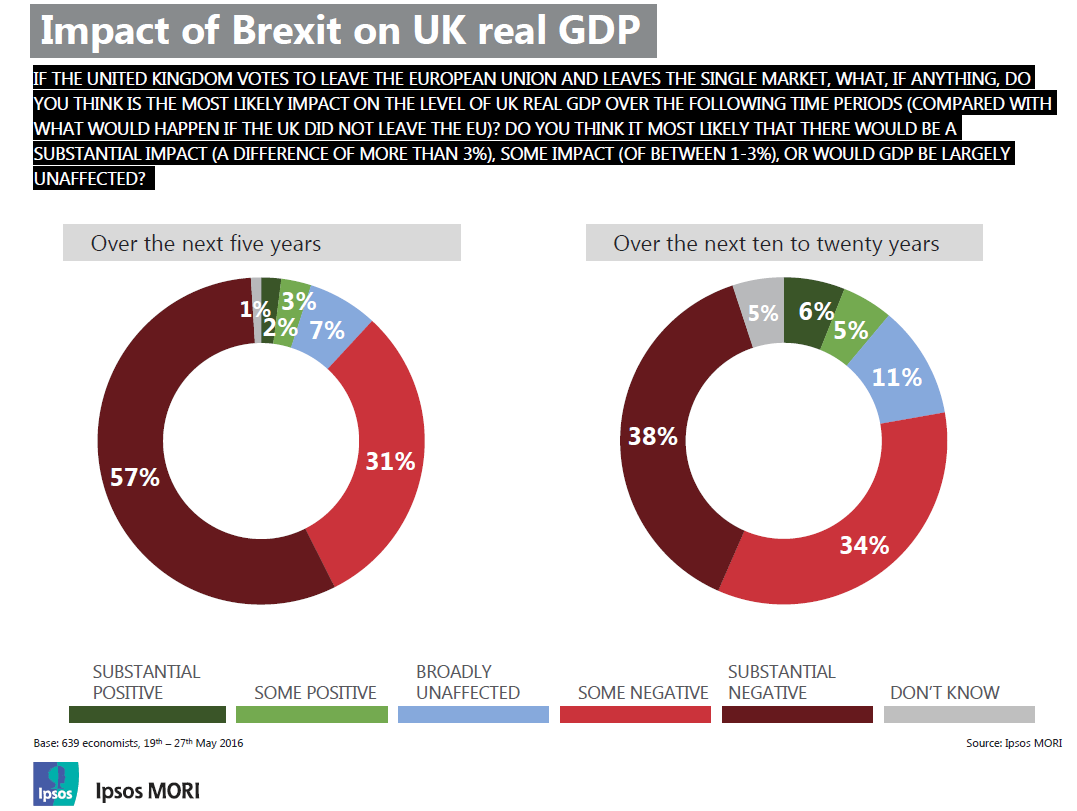 Then, less than four weeks before the vote, a poll of economists who are members of the Royal Economic Society and the Society of Business Economists came out strongly in favour of continued membership of the EU. Of the 639 respondents, 72 per cent thought that the most likely impact of Brexit on UK real GDP would be negative over the next 10 to 20 years; and 88 per cent thought the impact on GDP would be negative in the next five years (see chart: click to enlarge).
Then, less than four weeks before the vote, a poll of economists who are members of the Royal Economic Society and the Society of Business Economists came out strongly in favour of continued membership of the EU. Of the 639 respondents, 72 per cent thought that the most likely impact of Brexit on UK real GDP would be negative over the next 10 to 20 years; and 88 per cent thought the impact on GDP would be negative in the next five years (see chart: click to enlarge).
Of those stating that a negative impact on GDP in the next 5 years would be most likely, a majority cited loss of access to the single market (67%) and increased uncertainty leading to reduced investment (66%).
The views of the majority of economists accord with those of various organisations. Domestic ones, such as the Bank of England, the Treasury (see the blog Brexit costs), the Institute for Fiscal Studies and the National Institute for Economic and Social Research (NIESR) all warn that Brexit would be likely to result in lower growth – possibly a recession – increased unemployment, a fall in the exchange rate and higher prices and that greater economic uncertainty would damage investment.
International organisations, such as the OECD, the IMF and the WTO, also argue that leaving the EU would create great uncertainty over future trade relations and access to the Single Market and would reduce inward foreign direct investment and the flow of skills.
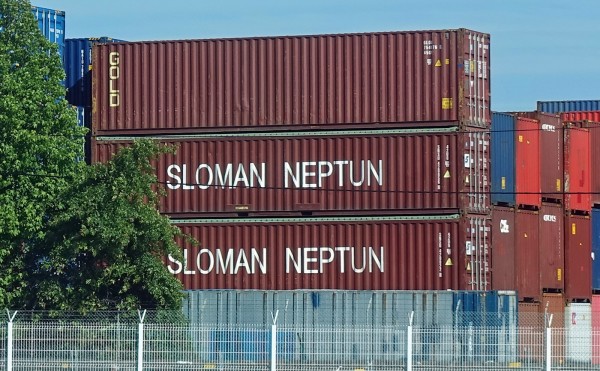 But the forecasts of all these organisations depend on their assumptions about trade relations and that, in the event of the UK leaving the EU, would depend on the outcome of trade negotiations. The Leave campaign argues that other countries would want to trade with the UK and that therefore leaving would not damage trade. The Remain campaign argues that the EU would not wish to be generous to the UK for fear of encouraging other countries to leave the EU and that, anyway, the process of decoupling from the EU and negotiating new trade deals would take many years and, in the meantime, the uncertainty would be damaging to investment and growth.
But the forecasts of all these organisations depend on their assumptions about trade relations and that, in the event of the UK leaving the EU, would depend on the outcome of trade negotiations. The Leave campaign argues that other countries would want to trade with the UK and that therefore leaving would not damage trade. The Remain campaign argues that the EU would not wish to be generous to the UK for fear of encouraging other countries to leave the EU and that, anyway, the process of decoupling from the EU and negotiating new trade deals would take many years and, in the meantime, the uncertainty would be damaging to investment and growth.
The articles linked below looks at the economic arguments about Brexit and reflect the range of views of economists. Several are from ‘The Conversation’ as these are by academic economists. Although some economists are in favour of Brexit, the vast majority support the Remain side in the debate.
Articles
EU referendum: Pros and cons of Britain voting to leave Europe The Week (4/5/16)
The fatal contradictions in the Remain and Leave camps The Economist (3/6/16)
Four reasons a post-Brexit UK can’t copy Norway or Switzerland The Telegraph, Andrew Sentance (10/6/16)
What will Brexit do to UK trade? Independent, Ben Chu (2/6/16)
Leavers may not like economists but we are right about Brexit Institute for Fiscal Studies, Paul Johnson (9/6/15)
Why Brexit supporters should take an EU-turn – just like I did The Conversation, Wilfred Dolfsma (8/6/16)
The economic case for Brexit The Conversation, Philip B. Whyman (28/4/16)
Fact Check: do the Treasury’s Brexit numbers add up? The Conversation, Nauro Campos (20/4/16)
Which Brexit forecast should you trust the most? An economist explains The Conversation, Nauro Campos (25/4/16)
Why is the academic consensus on the cost of Brexit being ignored? The Conversation, Simon Wren-Lewis (17/5/16)
How Brexit would reduce foreign investment in the UK – and why that matters The Conversation, John Van Reenen (15/4/16)
The consensus on modelling Brexit NIESR, Jack Meaning, Oriol Carreras, Simon Kirby and Rebecca Piggott (23/5/16)
Reports, Press Conferences, etc.
Economists’ forecasts: Brexit would damage growth Financial Times, Chris Giles and Emily Cadman (3/1/16)
The Economy After Brexit, Economists for Brexit
Economists’ Views on Brexit Ipsos MORI (28/5/16)
Inflation Report Bank of England (May 2016)
EU referendum: HM Treasury analysis key facts HM Treasury (18/4/16)
Brexit and the UK’s public finances Institute for Fiscal Studies, Carl Emmerson , Paul Johnson , Ian Mitchell and David Phillips (25/5/16)
The Long and the Short of it: What price UK Exit from the EU? NIESR, Oriol Carreras, Monique Ebell, Simon Kirby, Jack Meaning, Rebecca Piggott and James Warren (12/5/16)
The Economic Consequences of Brexit: A Taxing Decision OECD (27/4/16)
Transcript of the Press Conference on the Release of the April 2016 World Economic Outlook IMF (12/4/16)
Macroeconomic implications of the United Kingdom leaving the Euroepan Union IMF Country Report 16/169 (1/6/16)
WTO warns on tortuous Brexit trade talks Financial Times, Shawn Donnan (25/5/16)
Questions
- Summarise the main economic arguments of the Remain side.
- What assumptions are made by the Remain side about Brexit?
- Summarise the main economic arguments of the Leave side.
- What assumptions are made by the Leave side about Brexit?
- Assess the realism of the assumptions of the two sides.
- If the UK exited the EU, would it be possible to continue gaining the benefits of the single market while restricting the free movement of labour?
- Would it be beneficial to go for a ‘free trade’ option of abolishing all import tariffs if the UK left the EU? Would it mean that UK exports would face no tariffs from other countries?
- If forecasting is unreliable, does this mean that nothing can be said about the costs and benefits of Brexit? Explain.
 In a recent blog, Falling sterling – bad for some; good for others, we looked at the depreciation of sterling following the Brexit vote. We saw how it will have beneficial effects for some, such as exporters, and adverse effects for others, such as consumers having to pay a higher price for imports and foreign holidays. The article linked below examines these effects in more depth.
In a recent blog, Falling sterling – bad for some; good for others, we looked at the depreciation of sterling following the Brexit vote. We saw how it will have beneficial effects for some, such as exporters, and adverse effects for others, such as consumers having to pay a higher price for imports and foreign holidays. The article linked below examines these effects in more depth. It is similar with imports. How much the sales of these fall depends again on two main things. The first is the amount by which the importing companies are prepared to raise sterling prices. Again assume that the pound falls from €1.30 to €1.18 – in other words, the euro rises from 76.92p (£1/1.3) to 84.75p (£1/1.18). What happens to the price of an import to the UK from the eurozone whose euro price is €100? Does the importer raise the price from £76.92 to £84.75, or by less than that, being prepared to accept a smaller profit margin?
It is similar with imports. How much the sales of these fall depends again on two main things. The first is the amount by which the importing companies are prepared to raise sterling prices. Again assume that the pound falls from €1.30 to €1.18 – in other words, the euro rises from 76.92p (£1/1.3) to 84.75p (£1/1.18). What happens to the price of an import to the UK from the eurozone whose euro price is €100? Does the importer raise the price from £76.92 to £84.75, or by less than that, being prepared to accept a smaller profit margin?












